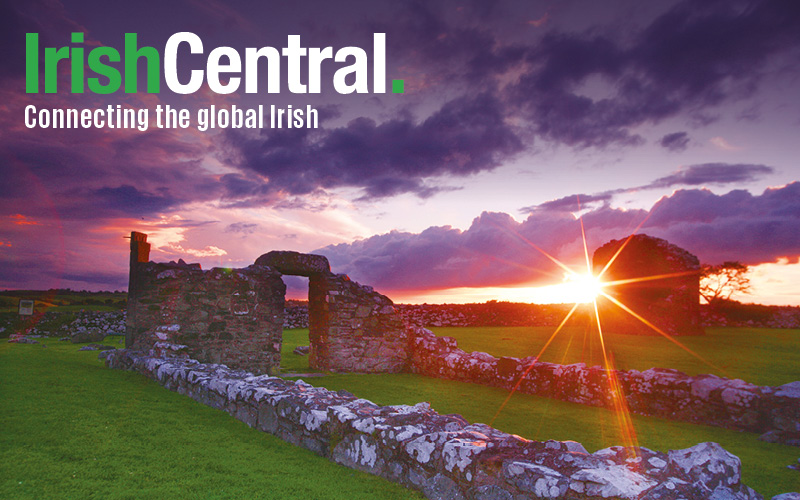A street has been renamed in Maspeth in the New York borough of Queens as part of the centennial commemorations for the 1916 Easter Rising. Over 300 people gathered this past Saturday in the heart of this strong Irish community to watch as Easter Rising Way was unveiled to honor the revolution which helped Ireland gain independence from British rule almost 100 years ago.
The unveiling took place at the bottom of ‘Step Street,’ the previous name for this thoroughfare which is well known among locals in the area. The top of the street is one of the highest points in western Queens and takes in the Manhattan skyline and overlooks Calvary Cemetery, which is a burial ground for many Irish Americans. Within the grounds of this historic cemetery stands a monument for the famed Fighting 69th, as well a Fenian Monument for the Irish freedom fighters.
The United States played a key role in the years leading up to the Easter Rising. It was here in New York City that Tom Clarke, one of the leaders of Irish Rebellion, spent many years planning and raising funds for the revolution. Many of the funds were raised in Celtic Park, which is a short distance from Easter Rising Way and was as an important meeting place for “Irish fraternal, social and political organizations.”
Among the large audience who attended the ceremony were many local dignitaries as well as some notable Irish figures who played key roles in having this street renamed. New York City Council Member Elizabeth Crowley was responsible for bringing this renaming forward to the council.
Crowley said, “As the Easter Rising Way ascends, this staircase symbolizes the struggle of the Irish people who have fought for freedom and peace for centuries…. We honor and remember the Easter Rebellion because it was a watershed moment that led to the creation of the Irish State. Today we commemorate the willful determination of the Irish people to chart their own future.
“When our Irish ancestors saw injustices they fought to make things right to provide a better life for themselves and better opportunities for their children. These are values that are still fought for today, both here in America and in Ireland. The connection between our two countries are undeniable.”
Keynote speaker for the event was Sinn Fein President, Gerry Adams, who has been an advocate for peace in Northern Ireland and played a key role in the Good Friday Agreement. Adams talked of the significance of the connection between Ireland and America, as well as acknowledging the role Irish America played during the Rising and the Peace Process.
“New York at the time was a city of the Famine Irish, the children of the Famine. It was also the city famously of Jeremiah O’Donovan Rossa. And before that it was the city of some of those who had fought in the 1798 rebellion……The IRB, who actually planned the rising, was founded here, not in Ireland, but here.” Adams also spoke of the significance of Padraig Pearse’s famous oration at the funeral of O’Donovan Rossa in August 1915 and how it was “essentially a call to arms” for the Irish people.
Adams went on to say, “Irish America, it’s the bridge between Ireland and the political system here. That was most successfully seen during the Peace Process. Just by whatever small contribution you made, even by word, even by just explaining about something what was happening back home you became the drivers of Irish issues. It was you who put the Peace Process on the agenda of Bill Clinton, of George Bush and of President Obama and we need now to do that again with President-Elect Trump.”
Among the other speakers were Barbara Jones, Counsel General of Ireland, Councilman Daniel Dromm, Head of the council’s Irish Caucus and Ian McGowan of the Winged Fist Organization.




Comments